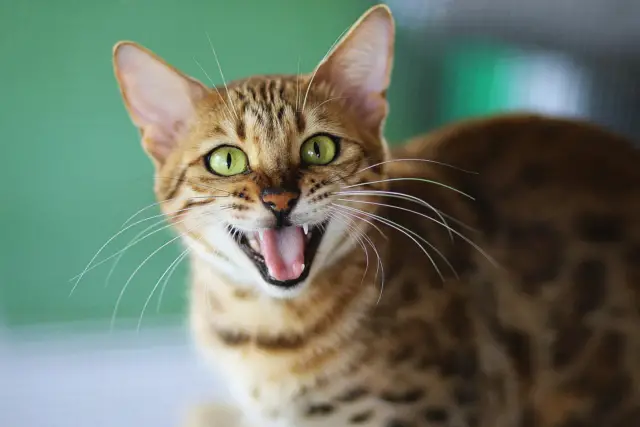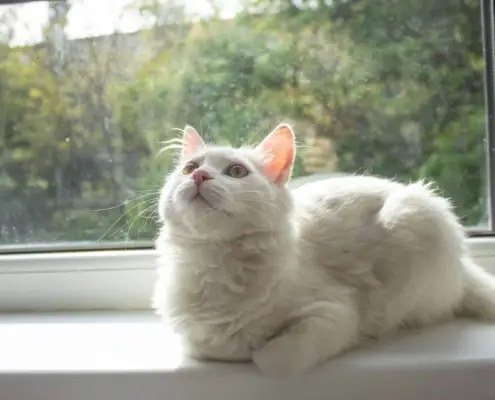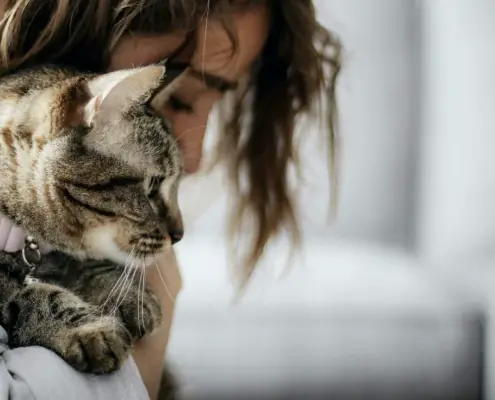
Cats are fascinating creatures, with their sleek bodies and sharp claws. But have you ever stopped to wonder about their jaws? The anatomy of a cat’s jaw is truly remarkable. Let’s delve into the intricate details of this feline feature.
A cat’s jaw is composed of several bones, including the mandible, maxilla, and temporal bones. The mandible is the lower jawbone, while the maxilla forms the upper jaw. These bones are connected by a hinge joint that allows the jaw to open and close. The temporal bones, located on either side of the skull, provide support and stability to the jaw.
How a Cat’s Jaw Works
A cat’s jaw works in a unique way compared to other animals. They have a specialized joint called the temporomandibular joint (TMJ) that enables them to open their mouths wider than most mammals. This flexibility allows cats to catch and consume their prey effectively.
The TMJ is capable of both rotational and translational movements. This means that cats can not only open and close their mouths but also move their jaws from side to side. This specialized jaw movement helps them tear apart their food and chew it into smaller pieces, making it easier to swallow.
Unique Features of a Cat’s Jaw
One of the most intriguing features of a cat’s jaw is its ability to function as both a predator and a carnivore. Cats have sharp, pointed teeth designed for tearing flesh. Their canines, located at the front of their mouths, are particularly long and sharp, allowing them to grasp and hold onto their prey.
Another unique aspect of a cat’s jaw is its retractable claws. These claws are controlled by tendons and can be extended or retracted at will. When a cat catches its prey, it uses its sharp claws to hold it in place while using its powerful jaws to deliver a fatal bite.
The Importance of a Cat’s Jaw in Hunting and Eating
A cat’s jaw plays a crucial role in its hunting and eating behaviors. The flexibility and strength of its jaw allow it to capture and kill prey efficiently. Cats have a bite force that is proportionally stronger than that of many other animals, allowing them to deliver a swift and lethal bite.
Once the prey is caught, a cat’s jaw enables it to tear apart the flesh and consume its meal. The rotational and translational movements of the jaw help break down the food into smaller, manageable pieces. Additionally, the sharp teeth aid in slicing through tendons and bones, ensuring that no part of the meal goes to waste.
Common Jaw-Related Health Issues in Cats
Unfortunately, cats are not immune to jaw-related health issues. One common problem is dental disease, which can lead to tooth decay, gum infections, and even tooth loss. Signs of dental issues in cats include bad breath, drooling, difficulty eating, and pawing at the mouth.
Another condition that can affect a cat’s jaw is temporomandibular joint dysfunction (TMJD). This occurs when there is a problem with the TMJ, resulting in pain and difficulty opening or closing the mouth. Cats with TMJD may exhibit signs such as jaw clicking, excessive yawning, and reluctance to eat.
How to Keep Your Cat’s Jaw Healthy
Maintaining your cat’s jaw health is essential for their overall well-being. Here are some tips to help you keep your feline friend’s jaw in top shape:
- Regular dental care: Brush your cat’s teeth regularly with a pet-specific toothbrush and toothpaste. This helps prevent plaque buildup and reduces the risk of dental disease.
- Provide appropriate chew toys: Chewing on toys can help keep your cat’s jaw muscles strong and their teeth clean. Look for toys specifically designed for dental health.
- Balanced diet: Feed your cat a balanced diet that promotes dental health. Consult with your veterinarian to determine the best food options for your furry friend.
- Regular veterinary check-ups: Schedule regular check-ups with your veterinarian to monitor your cat’s dental health and address any potential issues early on.
Tips for Feeding a Cat with Jaw Problems
If your cat is experiencing jaw problems, feeding them may require some adjustments. Here are a few tips to make mealtime easier for your feline companion:
- Soften their food: If your cat has difficulty chewing, you can soften their food by adding warm water or broth. This makes it easier for them to consume their meals.
- Smaller, more frequent meals: Instead of feeding your cat large meals, consider dividing their daily portion into smaller, more frequent meals. This reduces the strain on their jaw while ensuring they receive adequate nutrition.
- Consult with your veterinarian: If your cat has persistent jaw issues, it’s important to consult with your veterinarian. They can provide guidance on the best feeding methods and recommend any necessary treatments.
Interesting Facts about Cat Jaws
Here are some fascinating facts about cat jaws that you may find intriguing:
- Cats have a total of 30 teeth, including incisors, canines, premolars, and molars.
- A cat’s bite force is estimated to be around 200 pounds per square inch (psi), stronger than that of a human.
- Cats have a unique grooming behavior called “flehmen response” where they open their mouths to analyze scents using a specialized organ located in the roof of their mouths.
- The jaw structure of big cats, such as lions and tigers, is similar to that of domestic cats, but their bite force is significantly stronger.
Cat Jaw-Related Myths Debunked
There are several myths surrounding cat jaws that need to be debunked. Let’s set the record straight:
- Myth: Cats need their jaws to be declawed for their own safety.Fact: Declawing is an unnecessary and painful procedure that should be avoided. Cats’ retractable claws are a natural part of their anatomy and serve important functions.
- Myth: Cats can easily dislocate their jaws to swallow large prey.Fact: Cats cannot dislocate their jaws. Their jaw structure allows for flexibility and wide mouth opening, but dislocation is not possible.
- Myth: Cats always land on their feet because of their jaw structure.Fact: Cats have a remarkable ability to right themselves during a fall, primarily due to their flexible spine and inner ear, not their jaw structure.
Conclusion
Cat jaws are a marvel of nature, designed for hunting, tearing flesh, and consuming prey. Understanding the anatomy and functionality of a cat’s jaw can help us appreciate the incredible adaptations that allow cats to thrive in their natural environment. By keeping their jaws healthy and addressing any potential issues, we can ensure our feline companions lead happy and comfortable lives. So next time you see your cat yawn or devour its food, take a moment to admire the wonders of its jaw.
If you enjoyed my article, I would appreciate you sharing it with your network.

Sima Ndlebe
Sima writes for CatBuzz. He is interested in Cats, Health and Fitness, and Entrepreneurship.
Published: 17 November 2023



